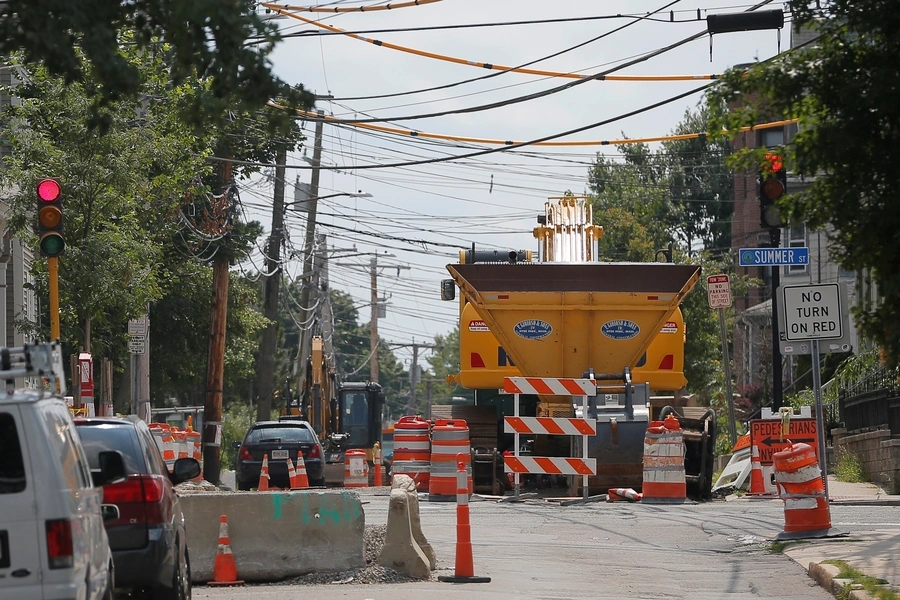Bipartisanship on Infrastructure? Not So Fast

More on:
As expected, President Trump used his State of the Union speech to highlight his appeal for bipartisan support for his $1.5 trillion plan to “rebuild our crumbling infrastructure…to give us safe, fast, reliable and modern infrastructure that our economy needs and our people deserve.” Bravo. The need to address this country’s infrastructure deficiencies is one area where there is real bipartisan agreement. Unfortunately, once you get past the top line agreement that something must be done, the devilish details emerge and fundamental disagreements become clear.
Sadly, in spite of a cooperative outreach on infrastructure, a bipartisan deal in 2018 appears unlikely. There are huge gaps between how Democrats and Republicans approach everything from how to use federal dollars, where to use federal dollars, how many of those federal dollars should be used, and where to find them. Battles over infrastructure are not likely to be limited to Democrats versus Republicans. One of the reasons that infrastructure is so difficult is because it also pits the federal government against state and local governments, which are being asked to shoulder an increasingly disproportionate share of the burden, and rural against urban, making a comprehensive solution that much more politically and financially divisive.
On the back of Trump's speech, and the delayed, detailed White House infrastructure plan to be released soon, I expect that we will be hearing a lot about infrastructure in the coming months.[1] Headlines around big ticket proposals from both parties, as well as Congressional hearings and the likely introduction of a variety of infrastructure bills, will raise expectations of a bipartisan deal, especially given strong popular support.[2]
Yet, a bipartisan deal on infrastructure in 2018 remains deeply challenging. There are wide ideological differences between Republicans and Democrats, and no mutually agreeable plan on how to pay for the underlying $200 billion appropriation that was floated in the early preview of the White House plan last May. Republicans who turned a blind eye to increased deficits in the context of tax reform are likely to regain their sight and renew focus on deficit control when it comes to spending on infrastructure. Repatriation, once considered a potential “pay for” for infrastructure, was already used to “pay for” tax reform. There is no obvious way to pay for any package.
There are also fundamental differences between Democratic and Republican approaches on how and where to invest federal dollars. The White House approach is mainly through private sector and non-federal funding of investment and the Democrats want mainly a public sector approach. Given that the Trump administration’s private sector approach would disadvantage rural communities as contrasted with more commercially viable higher density urban areas, there is likely to be a strong dividing line on this issue between rural and urban districts regardless of political party affiliation.
The administration’s increased burden on state and local governments will also prove divisive. States already provide the majority of US infrastructure investment through their own municipal bond issuance. Likewise, some states are better prepared than others to both evaluate and utilize innovative financing arrangements with more significant private sector involvement. Not all state and local governments have technical expertise to evaluate the costs and benefits of private investment alternatives, and in some cases there is still no state legislation to govern private infrastructure investment. Finally, if criteria for obtaining federal funds rest too heavily on a state’s ability to attract non-federal funds, government funding could end up targeting profitable infrastructure projects, and leave critical unprofitable projects on the wayside.
While President Trump can use the pulpit of the State of the Union to propose bipartisan cooperation on infrastructure and provide the starting gun, it is Congress that will ultimately need to play the leading role in making any infrastructure package a reality. Given wide gaps between rhetoric and the reality of finding a way to pay for proposed infrastructure plans that could pass both houses, including the need for support from at least nine Democratic senators, real progress on a sorely needed infrastructure package in 2018 might advance the ball, but reaching the goal line will remain elusive.
The most hopeful signs we are likely to see this year would be movement towards a bipartisan approach to how to pay for whatever compromises lie ahead. But even then, the road ahead is bumpy. Unless Democrats and Republicans can also agree on the details of how and where to invest precious federal funds, big and bold infrastructure investment may, unfortunately, remain a future initiative rather than a reality during the Trump administration. Calls for bipartisan cooperation on infrastructure are easy. Infrastructure, however, is hard.
[1] Building on the administration's brief overview released last May and possibly reflecting the leaked White House draft infrastructure plan from last week.
[2] The Democrats also laid out their own $1 trillion infrastructure plan and consider infrastructure investment to be one of their key policy issues.
More on:
 Online Store
Online Store